
Wood duck birdhouse
Birdhouses
There are two kinds of birdhouses along this trail. Some are for wood ducks and others are for songbirds.Birdhouses are built differently depending on the type of bird they hope to attract. The wood duck houses are larger and the holes in them are large and oval. The hole diameter is about 4 inches. These boxes are tall and proportionally narrow, and they are found close to the river. There is one located on the river side of the trail, between the Blueberry marker and the Oak marker.
Songbird houses have smaller, circular openings. The openings in these boxes are only 1 1/2 inches in diameter. The boxes have a shape more closely rembling a cube. They are located slightly farther away from the river than the wood duck houses. You can see a songbird house on the left side of the trail just past the Jack-in-the-pulpit marker.

Songbird birdhouse
Wood Ducks
Wood ducks (Aix sponsa) are brightly colored birds. The male has a dark, often green, head with white stripes down the neck and strikingly red eyes. The female is brown and has a white oval around her eyes. They are medium-sized ducks, about 50 cm (20 inches) long. Their make their nests in trees in the wetlands along both coasts of North America. The elevated nest site offers protection from predators.During the 19th century wood duck feathers were in high demand for decorating ladies's hats. The ducks were overhunted. As wetlands were destroyed, they also lost a large number of their nesting sites. Their numbers decreased and they were almost wiped out by the beginning of the 20th century.
Laws were passed limiting how many ducks each person may hunt. In the 1930s people began putting up bird houses for wood ducks. Their population has increased despite the fact that they are still the second most hunted duck in North America. The mallard is the most hunted.
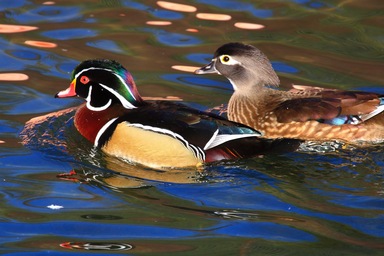
Male and female wood duck by Frank Peters on fotopedia.com
Photo taken at the Memphis zoo
 Wood duck male in water by Edward Wagner,
Wood duck male in water by Edward Wagner,U.S. Fish and Wildlife Service
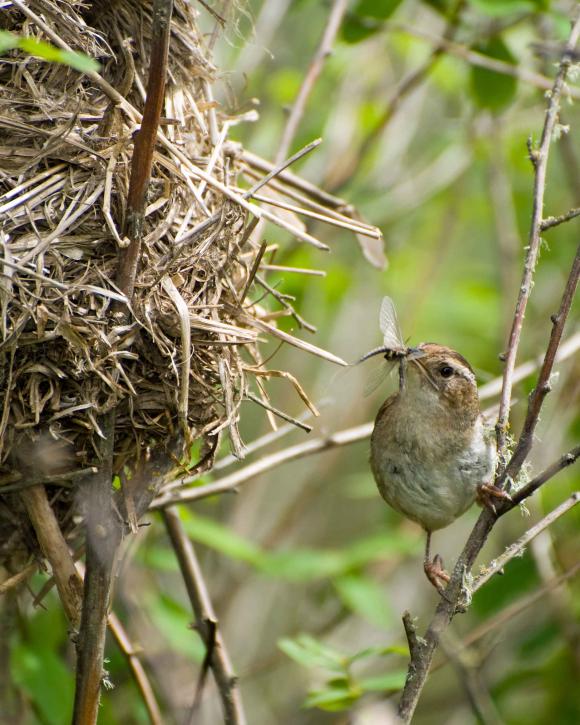
Marsh wren by George Gentry,
U.S. Fish and Wildlife Service
Marsh wren
The marsh wren (Cistothorus palustris) is a small songbird that inhabits wetlands in North America. It is brown on the top with a lighter brown belly and a white breast. The top of its head is dark brown and it has a white line just above and behind the eye. It eats mostly insects. It likes to live among cattails. Since cattails are being crowded out by purple loosestrife, and because wetlands have been destroyed, its numbers are gradually shrinking.Swamp sparrow
The swamp sparrow (Melospiza georgiana) has a reddish brown back and grey breast and face. Males and some females are also reddish brown on top of the head. They have a dark stripe just behind the eye. They live in wetlands in eastern and central North America and eat mostly insects and some seeds. They have long legs because they forage for food in the mud near rivers or marshes. Their numbers have declined due to loss of wetlands.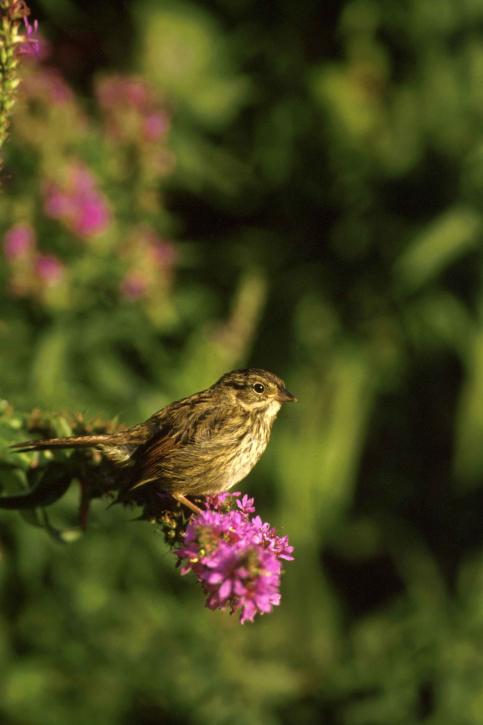
Swamp sparrow by John and Karen Hollingsworth,
U.S. Fish and Wildlife Service

Female red winged blackbird
by Dave 2x on flickr
Red winged blackbird
Red winged blackbird (Agelaius phoeniceus) is a common songbird throughout North America. It is sexually dimorphic (males and females look very different). The male is almost all black, with bright red shoulders and a yellow bar just below the red. Females are brown with a white stripe just above and behind the eye. Red winged blackbirds eat seeds and insects.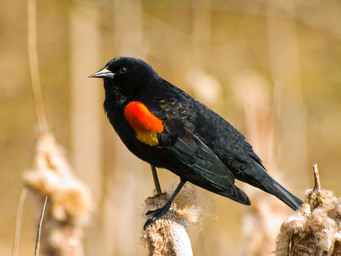
Male red winged blackbird
by Michael @ NW Lens on flickr
Tree swallow
The male tree swallow (Tachycineta bicolor) is shiny blue or blue-green on its back and head. The female is slightly less vivid colored, more greenish than the male. They are both white underneath. The tree swallow has a small beak. Its tail is slightly forked. They live near water and eat mostly insects and some fruit.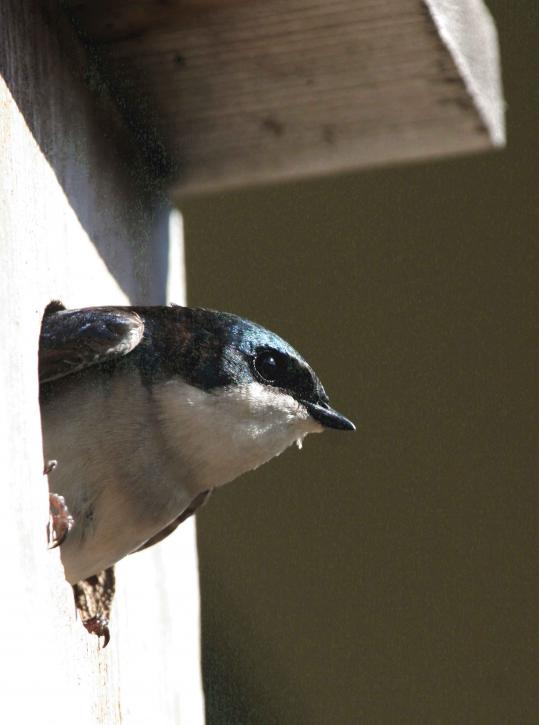
Tree swallow profile in nest box by
Donna Dewhurst, U.S. Fish and Wildlife Service
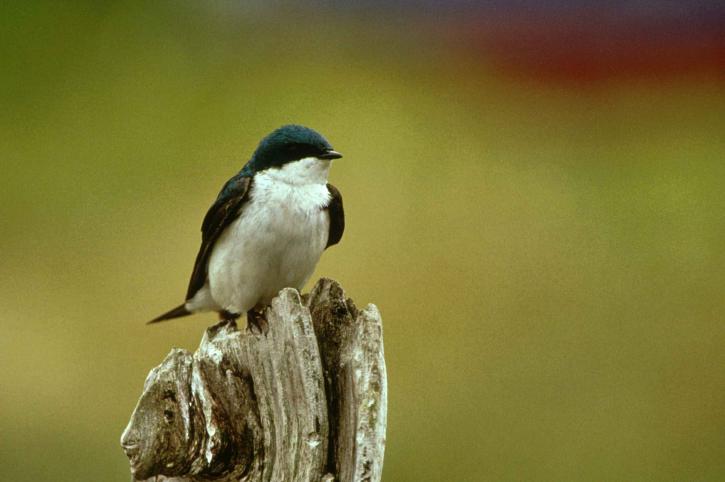
Tree swallow by James C. Leupold,
U.S. Fish and Wildlife Service